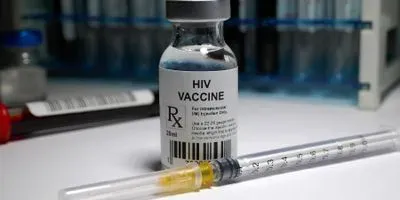By Adeyemi Adekunle
For 23-year-old Chinwe Ogbonn, living in the rural outskirts of Makurdi in central Nigeria has always been a challenge, but one thing she never anticipated was how vulnerable her life would become to HIV. Like many young women in her community, Chinwe carries the weight of stigma, limited access to healthcare, and the silent struggle of daily survival. Sitting on a wooden bench in her modest family compound, she speaks softly, reflecting on the harsh realities that her peers endure.
“Many of my friends have died of AIDS,” she begins, her eyes fixed on the dusty ground. “Some didn’t even know they were sick until it was too late. Others gave up on taking their daily medications because the clinic is far, and people gossip when they see you collect the pills.”
Chinwe’s story is heartbreakingly common. In sub-Saharan Africa, particularly among adolescent girls and young women, new HIV infections are rising at alarming rates.
UNAIDS estimates that nearly 4,000 adolescent girls and young women contract HIV every week in the region, and for those who test positive, adhering to treatment or prevention medications can feel like an impossible task.
It’s this reality that makes the announcement of a new long-acting HIV prevention drug, lenacapavir, so significant—it offers not just a medical breakthrough, but a lifeline for people like Chinwe.
The twice-yearly injection, developed by Gilead Sciences, has shown remarkable success in preventing HIV during clinical trials this year. For global health advocates, lenacapavir’s potential rollout in the world’s poorest countries by late 2025 or early 2026 marks a turning point. It promises to eliminate many of the barriers that have kept lifesaving HIV treatments out of reach for millions of people. For women like Chinwe, it could mean the difference between life and death.
“I wish there was something like this before,” Chinwe says, her voice tinged with hope. “Taking medicine every day is not easy, especially when you live far from the clinic, or when people judge you for it. If this injection really works, maybe more people will be saved.”
Hui Yang, Head of Supply Operations at the Global Fund to Fight AIDS, Tuberculosis, and Malaria, understands what is at stake. “We don’t want low- and low-middle-income countries to wait, to be at the back of the line,” she said in an interview, referencing the inequalities that have long plagued access to life-saving drugs. Her statement echoes the painful lessons of the past. When antiretroviral therapies (ART) were first introduced, they transformed HIV from a death sentence into a manageable condition for people in wealthier nations. But it took years for the same treatments to reach sub-Saharan Africa, where HIV continues to ravage entire communities.
For Chinwe’s neighbor, Adeolu Johnson, a 37-year-old farmer and father of three, the memories of that disparity still sting. He lost his younger brother, Tobi, to AIDS in 2010 because treatment came too late. Adeolu remembers how Tobi struggled to take his medications consistently, partly because the drugs were expensive and inaccessible in their village at the time.
“I still see him in my dreams sometimes,” Adeolu says, his voice breaking. “He was so full of life, but he just couldn’t keep up with the pills. We didn’t have a proper hospital nearby, and when he finally got help, the doctors said it was already too late.”
The introduction of lenacapavir offers hope that no family will have to endure such loss again. Unlike daily oral medications, which require strict adherence, the injectable drug is administered just twice a year. It removes many of the challenges people face when accessing HIV prevention tools—daily stigma, forgetfulness, long clinic journeys, and limited healthcare infrastructure.
For the poorest nations, where healthcare systems are often fragile, this innovation could prove transformative. However, as Hui Yang cautions, there is still much work to be done. The drug’s rollout hinges on regulatory approvals from the United States Food and Drug Administration (FDA) and the World Health Organization (WHO), as well as negotiations to make it affordable. Gilead Sciences currently charges over $42,000 for the first year of treatment in the U.S.—a price unimaginable for resource-limited countries.
The Global Fund’s decision to collaborate with the United States President’s Emergency Plan for AIDS Relief (PEPFAR), the Children’s Investment Fund Foundation, and the Bill and Melinda Gates Foundation reflects a strategic effort to break financial and logistical barriers. Together, they aim to ensure that at least two million people have access to the drug within three years of its rollout. While the details of these partnerships remain unclear, the commitment signals a unified push to prevent delays in low-income regions.
In rural communities across Nigeria, where healthcare is often a luxury, people are cautiously optimistic. Martha Abang, a nurse who runs an HIV counseling center in a remote village near Jos, has seen firsthand how stigma and poverty prevent people from seeking help. “If this injection becomes available, it will change everything,” she says. “Women will no longer have to hide pills under their clothes or skip doses because they can’t afford transport to the clinic. A twice-yearly shot will give them freedom.”
Martha recalls counseling a 19-year-old girl, Bose, who tested positive for HIV last year. Bose, who works as a hairdresser’s apprentice, stopped taking her medication after a neighbor discovered her status and began spreading rumors. The young woman’s health deteriorated rapidly, and by the time Martha convinced her to return to treatment, the damage was severe.
“This stigma kills as much as the virus,” Martha says. “Young people like Bose don’t have the support they need. Lenacapavir could help us reach them in a way that daily pills never could.”
For health experts, the drug’s rollout also holds promise for breaking transmission chains in high-risk populations, such as young women, sex workers, and men who have sex with men. In sub-Saharan Africa, these groups face disproportionate risk, yet often lack access to effective prevention tools.
As communities like Chinwe’s look toward the future, hope begins to replace despair. The global HIV epidemic has claimed over 40 million lives to date, and while progress has been made, millions remain at risk. The promise of lenacapavir reminds the world that innovation must be paired with action—that no life should be valued less because of geography or income.
Chinwe, whose voice grows stronger as she speaks of the future, believes this drug could finally give her generation a fighting chance. “I have seen too many lives lost,” she says, a determined look in her eyes. “If they can bring this injection here, maybe we can stop HIV for good.”
The weight of the world’s most vulnerable people now rests on the decisions of global leaders, pharmaceutical companies, and health organizations. For families like Chinwe’s, lenacapavir is more than just a drug; it’s a shot of hope, a chance to reclaim lives that have too often been cut short.



